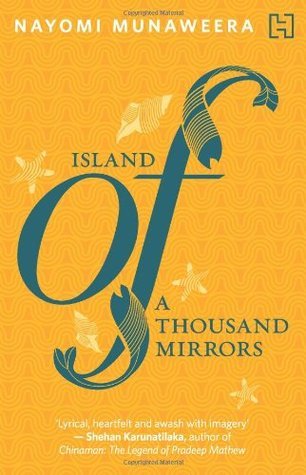What do you think?
Rate this book


226 pages, Paperback
First published January 1, 2012
There is silence and then the familiar smack of Beatrice Muriel's palm against her forehead. "A love marriage," she says. In her opinion, love marriages border on the indecent. They signify a breakdown of propriety, a giving in to the base instincts exhibited by the lower castes and foreigners. She believes marriages are too important to be relegated to the randomness of chance meetings and hormonal longings. They must be conducted with precision, calculated by experts, negotiated by a vast network of relations who will verify the usual things: no insanity in the family, evidence of wealth and fertility, the presence of benevolent stars.
We had been talking in our own shared language, that particular blur of Sinhala, Tamil and English much like what our mothers used in the early days, when suddenly my grandmother, her attention telescoped on us, pins him like an insect. Her iced voice, incredulous, "Are you teaching my granddaughter Tamil?" Her hand smashing hard across his cheek. He rips his hand from mine, turns to run. The camera in my father's hand clicks shut."
There are roofless, bombed-out houses with bullet-splattered walls and empty, eyeless rooms everywhere. I hate these houses, they look like dead bodies or like mad people, laughing through their openmouthed doorways. I want to know what this place looked like before, when all the houses were whole, when people lived in them and cared about them and grew vegetables in front of them, flowers even.
“She talks in her most sedate voice, attempting to alleviate our fears, soothe our anxiety. She knows that if we are to survive watching this war from a distance, as spectators, we do not have the privilege of indignation or anxiety.”